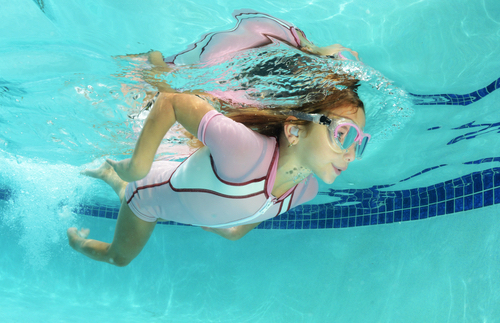


Summer is in full swing, which means Aussies will be flocking to the beach and pool to cool off. Unfortunately, more time in the water means there’s a higher chance of getting Swimmer’s ear. The home doctor experts at House Call Doctor have all the information you need to know on how to treat the condition.
What causes Swimmer’s ear?
Swimmer’s ear is usually caused by a bacterial infection, resulting from regularly getting water in your ear canal. A wet ear canal makes it easier to get infected, particularly if the water isn’t clean. Damage or irritation to the ear canal can also increase the risk of swimmer’s ear.
Some of the risk factors and causes include:
- Water – dirty water can deliver bacteria to the ear canal
- Mechanical damage – cleaning your ear with a cotton bud, wearing hearing aids or scratching inside your ears
- Chemical irritation – shampoos, hairsprays and hair dyes entering the ear canal and irritating the tissues
- Middle ear infection – can trigger an infection or inflammation in the ear canal
- Narrow ear canals – water is unable to drain as effectively
- Diabetes – this condition can make earwax too alkaline, creating a hospitable environment for infections
- Folliculitis – an infected hair follicle can trigger a generalised infection.
Swimmer’s ear can also develop if you have an allergic or fungal reaction to something inside your ears. You are more likely to get the condition if you have skin problems like eczema, as the skin does effectively not act as a protective layer.
What are the symptoms of Swimmer’s ear?
Some symptoms of Swimmer’s ear include:
- Ear pain
- Itching
- A popping sensation when you move your jaw or ear
- A feeling of pressure in your ear
- Tenderness when moving your ear or jaw
- Trouble hearing
- Foul-smelling yellow or green pus in the ear canal
- Noises inside the ear, such as buzzing or humming.
How is it diagnosed?
Swimmer’s ear is diagnosed through a physical examination. A GP or health professional will look at the ear canal using an otoscope. The skin of the ear canal will appear red, scaled and peeling, while the eardrum may be inflamed and swollen. A microscopic examination of the discharge in the ear canal will confirm whether the infection is caused by bacteria or fungi.
What are the treatment options?
Your doctor will usually prescribe medicated ear drops. In most cases, treatment will improve symptoms within one to three days. If your symptoms have not improved by then, House Call Doctor recommends revisiting your GP.
Other treatments include:
- Cleaning of the ear canal
- Keeping the ear canal dry
- Painkillers
- Heat packs used on the ear
- Anti-fungal preparations
- Antibiotic ear drops
- Steroid-based ear dropped
- Oral antibiotics.
In the worst-case scenario, surgery may be needed to treat and drain infected skull bones. However, most cases of Swimmer’s ear are mild.
Prevention
House Call Doctor recommends a few ways to prevent Swimmer’s ear, including:
- Avoid swimming in dirty water
- Use earplugs to keep water out of your ears
- Dry your ears thoroughly after being in water
- Avoid spraying your ears with chemical products
- Do not overclean your ears
- Do not put your fingers inside your ears, as nails can break the skin of the ear canal.




